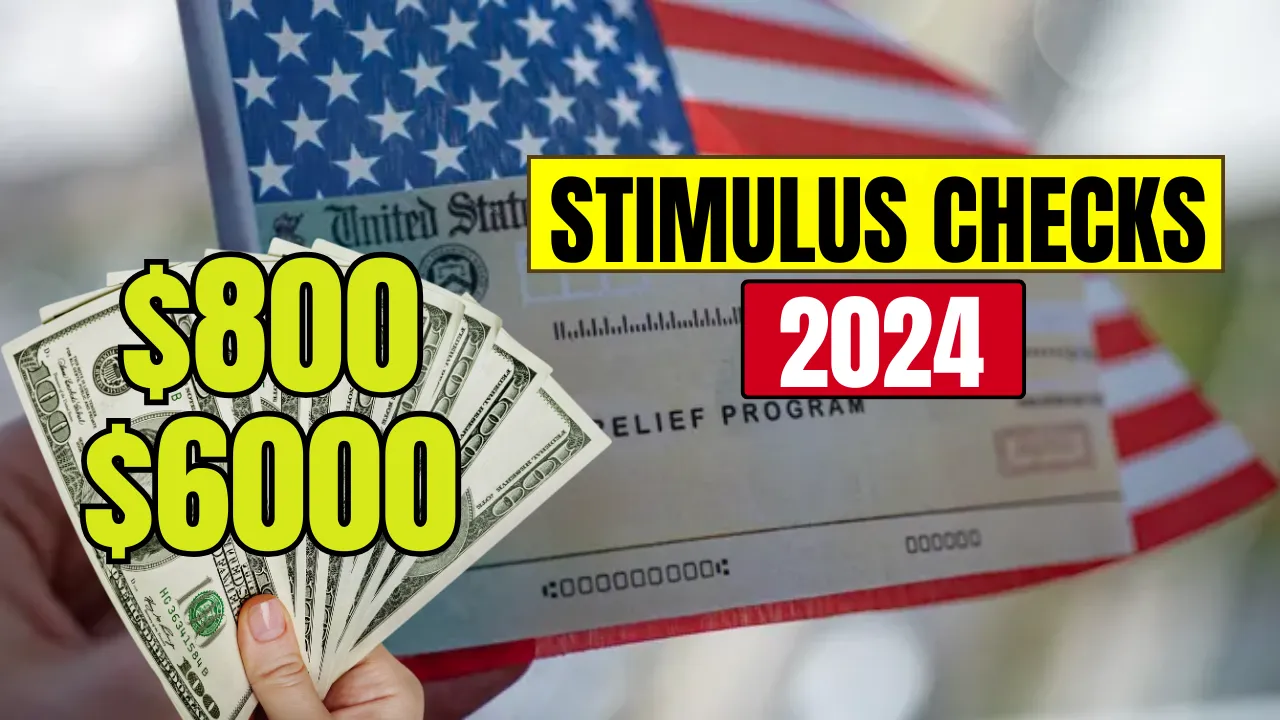$800 and $6,000 Stimulus Checks in 2024: In recent weeks, rumors about $800 and $6,000 stimulus checks for low-income individuals and seniors have gained traction on social media. These claims have generated hope among many struggling with rising costs. However, as of now, no official confirmation has been made by government agencies such as the Internal Revenue Service (IRS) or the Department of Treasury.
This article examines these rumors, clarifies the facts, and explores legitimate financial assistance programs available to Americans in 2024.
Overview of the Rumored Stimulus Checks
| Aspect | Details |
|---|---|
| Proposed Amounts | $800 and $6,000 |
| Target Groups | Low-income families, seniors |
| Official Status | Unconfirmed (as of 2024) |
| Source of Rumors | Social media and unofficial platforms |
| Government Response | IRS and Treasury deny such plans |
| Official Website | www.irs.gov |
$3,200 Payment for Canadian Seniors in 2024: What You Need to Know
What Are Stimulus Checks?
Stimulus checks, or economic impact payments, are typically issued during economic crises to support citizens. During the COVID-19 pandemic, several rounds of federal stimulus payments helped Americans cope with financial challenges.
The rumored $800 and $6,000 payments are being described as relief for low-income individuals and seniors. However, these claims are unsubstantiated, and no credible announcements have been made by government entities.
Debunking the Rumors:
1. No Federal Announcement
- IRS Statement: In March 2024, the IRS explicitly stated that no new federal stimulus programs were planned for the year.
- Treasury Confirmation: The Department of Treasury has not issued any related announcements.
2. Misrepresentation of State Programs
Some rumors falsely link these payments to state-level programs like:
- California Earned Income Tax Credit (CalEITC): Provides up to $3,529 for eligible workers, but not $6,000 as claimed.
- Child and Dependent Care Expenses Credit: Covers up to $6,000 in qualifying expenses but is not a direct payment.
3. Absence of Media Coverage
Major outlets such as CNN and Fox News have not reported on any new stimulus programs, a strong indicator that the rumors lack validity.
4. Government Warnings
Both the IRS and Treasury have cautioned the public about misinformation, urging reliance on official sources.
Why Do These Rumors Persist?
1. Social Media Amplification
Social platforms like Facebook and X (formerly Twitter) amplify unverified claims, making it easier for misinformation to spread rapidly.
2. Hope for Financial Relief
With ongoing inflation and economic challenges, many individuals are eager for financial support, making them more likely to believe and share such claims.
3. Misinterpretation of Existing Benefits
Some rumors misrepresent existing benefits, creating confusion about their nature and scope.
Legitimate Financial Assistance Programs in 2024:
While the rumored payments are unverified, there are credible programs offering financial support:
1. Federal Tax Credits
- Earned Income Tax Credit (EITC): Provides financial relief to low- and moderate-income workers.
- Child Tax Credit (CTC): Offers up to $2,000 per qualifying child.
2. State-Level Programs
- California Earned Income Tax Credit (CalEITC): Provides up to $3,529 for eligible workers.
- Child and Dependent Care Expenses Credit: Covers child care costs for working families.
3. Supplemental Nutrition Assistance Program (SNAP):
Provides monthly benefits to low-income households for purchasing food.
4. Housing Assistance
Programs are available at federal and state levels to assist with rent, utilities, and housing-related expenses.
How to Stay Informed
Avoid falling victim to misinformation by following these steps:
1. Check Official Sources
- Visit trusted government websites, such as:
- IRS.gov for federal tax announcements.
- FTB.ca.gov for California-specific programs.
2. Monitor Credible News Outlets
- Use reliable media platforms for accurate updates on financial relief programs.
3. Avoid Unverified Claims
- Ignore social media posts that are not supported by evidence from credible sources.
4. Consult Financial Experts
- Speak with a tax professional or financial advisor to understand your eligibility for benefits.
5. Sign Up for Alerts
- Subscribe to updates from government agencies to stay informed about new programs.
Conclusion
The $800 and $6,000 stimulus checks rumored for 2024 are unsubstantiated and lack any official confirmation from government authorities. While these claims have sparked interest, it’s important to rely on verified information and explore existing assistance programs that provide real financial relief.
By staying informed and cautious, individuals can avoid falling prey to misinformation while accessing the support they genuinely qualify for.

